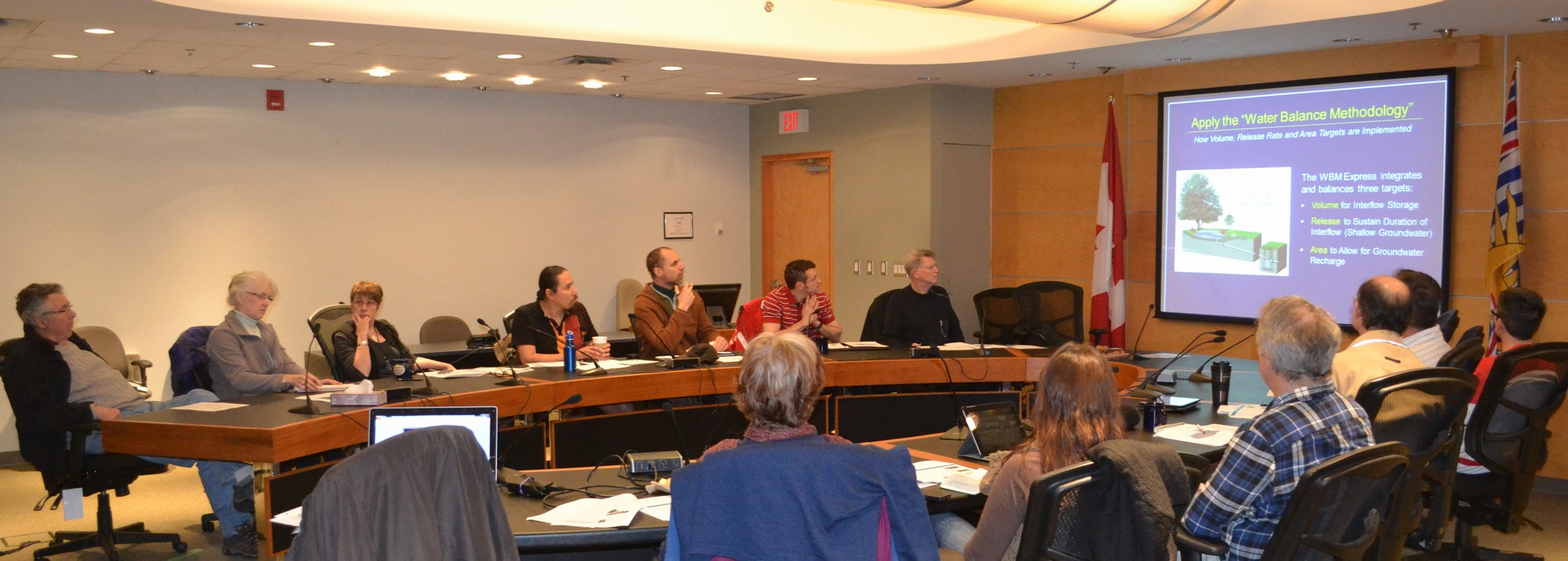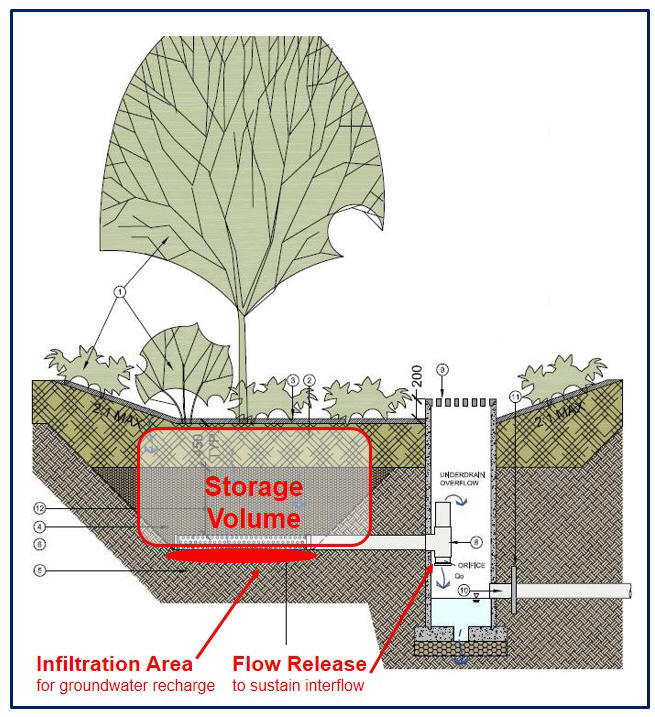Protecting Watershed Health: "Primer on Water Balance Methodology" released at Cowichan Valley forum
Note to Reader:
In February 2014, the Cowichan Valley Regional District provided the Partnership for Water Sustainability in BC with a venue to release the Primer on the Water Balance Methodology for Protecting Watershed Health. This is the fifth in the “Beyond the Guidebook Primer Series”. The Cowichan Valley is a demonstration region for application of tools and resources developed by the Partnership. Collaboration dates back to 2007.
The Partnership’s purpose in producing Primers is to inform and educate infrastructure, land use and environmental professionals about implementing actions at the site scale that will achieve desired outcomes at the watershed scale.

Hosted by the Cowichan Valley Regional District, a meeting of the Technical Advisory Committee of the Cowichan Watershed Board provided a timely opportunity to formally release the fifth guidance document in the “Beyond the Guidebook Primer Series”.
Mimic the Natural Water Balance – Tools & Resources
In 2002, looking at rainfall differently led the Province of British Columbia to adopt the Water Balance Methodology, initiate a performance target approach to capturing rain where it falls, and initiate changes in the ways rainwater runoff is returned to streams. The goal is to “mimic the Natural Water Balance”.
In February 2014 in the Board Room of the Cowichan Valley Regional District, the team of Kim Stephens (Executive Director) and Jim Dumont (Engineering Applications Authority) represented the Partnership for Water Sustainability for BC when they unveiled the Water Balance Model Express for Landowners (a web-based tool) and released the Primer on the Water Balance Methodology (a guidance document).
The fifth in the Beyond the Guidebook Primer Series, the Primer describes the science-based Methodology that integrates engineering and biophysical understanding.
Water Balance Model Express
The Water Balance Model Express is an interactive tool that allows property owners to rapidly test alternative rainwater control types and sizes.
The Express integrates three watershed-based performance targets that are pre-set by participating local governments to mimic natural processes and restore/protect watershed and stream health.
The Express guides the landowner through a simple and visually oriented set of sizing options.
“When we initiated the Water Balance Model Express project, the Cowichan Valley Regional District (CVRD) was one of the first Water Balance Model Partners to step up to the plate and ask to be a demonstration application during beta development and early implementation of this dynamic new tool,” reports Kim Stephens.

“Of importance to the Partnership, the CVRD took the initiative and solicited feedback from local focus groups. This feedback loop has proven invaluable in terms of how it has helped us enhance the user experience. Hence, the Partnership undertook to do the initial rollout of both the Express and Primer in the Cowichan Valley.”
Primer on Water Balance Methodology
The Primer is written primarily for water resource practitioners and provides local governments with guidance on how to apply the Water Balance Methodology so that they can populate the Water Balance Model Express with the three performance targets necessary to “mimic the Nature Water Balance”, namely: storage volume, infiltration area and flow release rate.
 “The Water Balance Methodology examines the flow paths of water in the watershed, and the flow in streams. The key is recognition of the integrated significance of these three flow paths, the period of time required for rainwater to reach the stream via each flow path, and the need to protect and maintain the natural distribution of rainwater via each flow path,” explains Jim Dumont.
“The Water Balance Methodology examines the flow paths of water in the watershed, and the flow in streams. The key is recognition of the integrated significance of these three flow paths, the period of time required for rainwater to reach the stream via each flow path, and the need to protect and maintain the natural distribution of rainwater via each flow path,” explains Jim Dumont.
“The innovation of the Water Balance Methodology is in the integration and application of proven scientific and engineering principles. Breakthroughs in science-based understanding occurred in the mid-1990s. Yet engineering practice generally did not incorporate this understanding. The Water Balance Methodology has addressed this historical oversight and is being enhanced over time to incorporate fresh insights.”
“The Water Balance Methodology provides a logical and straightforward way to assess potential impacts resulting from urban development; and analytically demonstrate the effectiveness of the methods proposed for preventing and/or mitigating those impacts,” concludes Jim Dumont.
To Learn More:
To download a copy, click on Primer on Water Balance Methodology for Protecting Watershed Health. The Primer storyline is structured in five parts:
- Part A: Watershed-Based Approach to Rainwater Management
- Part B: Water Balance Methodology Explained
- Part C: Science Behind the Methodology
- Part D: How to Establish Targets
- Part E: References
Landscape-based solutions would allow each property in a neighbourhood to capture, store and slowly release the right proportion of rainwater into the ground to replenish aquifers and streams. Illustrated below is a rain garden, which is a typical application.

How Performance Targets for Storage, Infiltration and Flow Release are incorporated in a Rain Garden Design <image source: “Stormwater Source Control Design Guidelines 2012 (Final Report), Metro Vancouver, British Columbia>


